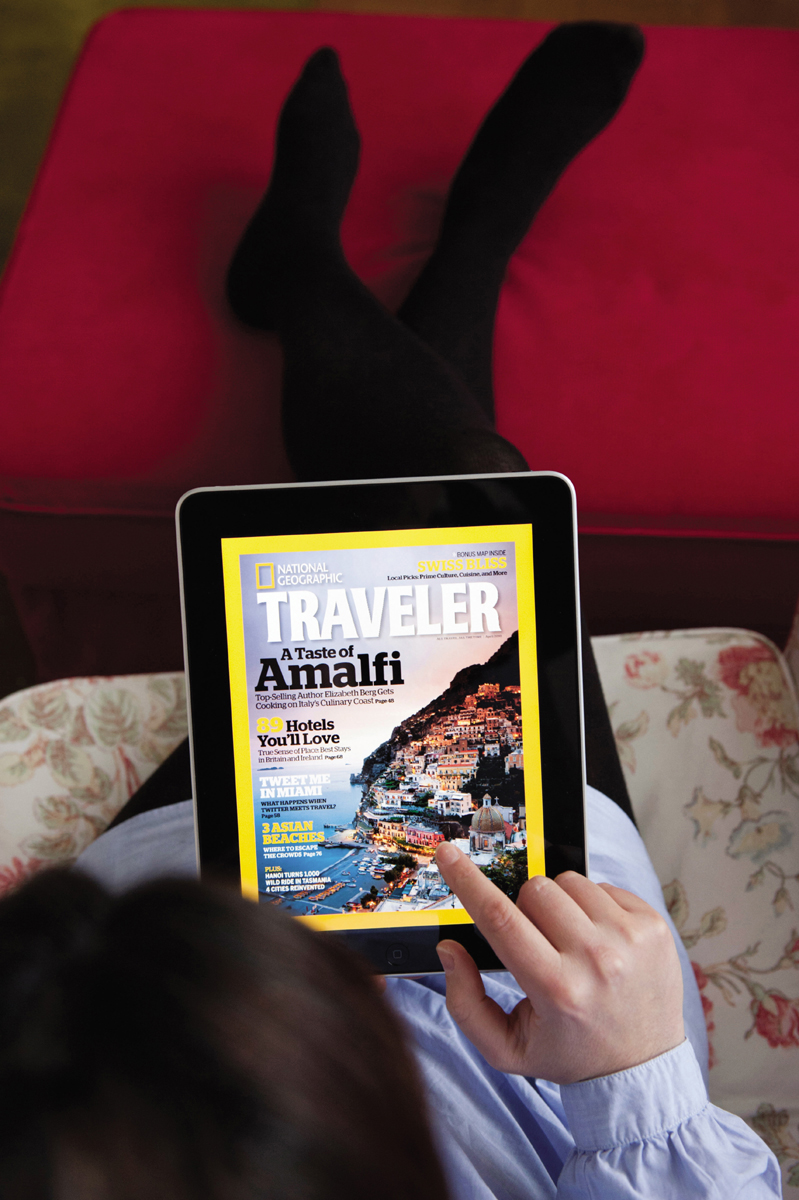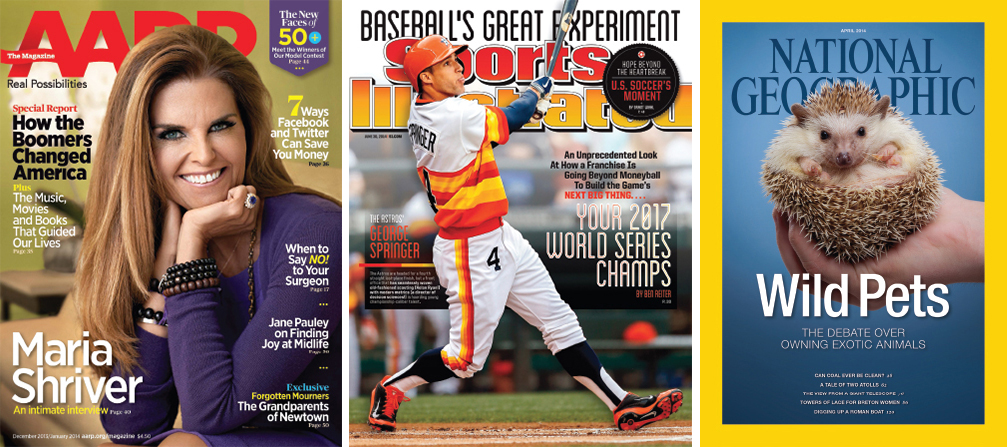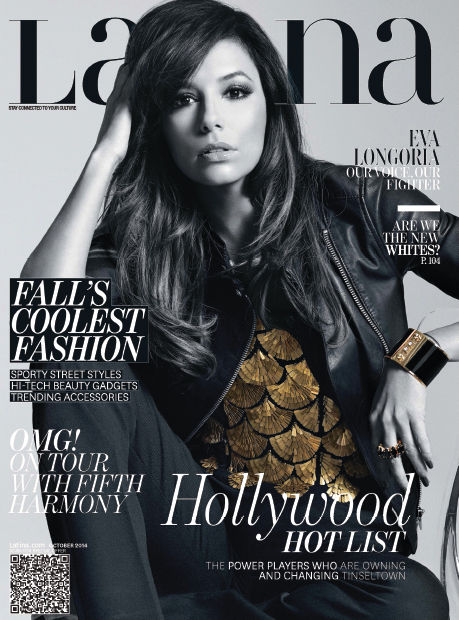The Domination of Specialization
The general trend away from mass market publications and toward specialty magazines coincided with radio’s move to specialized formats in the 1950s. With the rise of television, magazines ultimately reacted the same way radio and movies did: They adapted. Radio developed formats for older and younger audiences, for rock fans and classical music fans. At the movies, filmmakers focused on more adult subject matter that was off-
Magazines are now divided by advertiser type: consumer magazines (O: The Oprah Magazine, Cosmopolitan), which carry a host of general consumer product ads; business or trade magazines (Advertising Age, Progressive Grocer), which include ads for products and services for various occupational groups; and farm magazines (Dairy Herd Management, Dakota Farmer), which contain ads for agricultural products and farming lifestyles. Grouping by advertisers further distinguishes commercial magazines from noncommercial magazine-
In addition to grouping magazines by advertising style, we can categorize popular consumer magazine styles by the demographic characteristics of their target audience—
TRACKING TECHNOLOGY
The New “Touch” of Magazines
In the first decade of online magazines, there were relatively few great successes. Limited presentation and portability meant that readers did not clamor to sit down at a PC or with a laptop to read a magazine. Although many consumer magazines developed apps to put their titles on smartphones, these did not attract the attention of users. As one critic noted, “Whether squeezing facsimiles of print magazines onto a mobile phone is at all appealing to consumers is another issue.”1
Now, though, magazines may have found their most suitable online medium in touchscreen tablets. Apple was the first to make a significant splash with the introduction of the iPad in 2010. The iPad is the closest a device has gotten to simulating the tactile experience of holding a magazine and flipping its pages, with the dimensions and crisp color presentation similar to most consumer magazines. Since that time, the iPad has been released in even more sophisticated updates, and Amazon’s Kindle Fire, the Samsung Galaxy Tab, the Google Nexus, and Microsoft’s Surface have all emerged as worthy alternatives.

Iain Masterton/Alamy
For the magazine industry, rocked by a recession and rising costs for paper, printing, and distribution, the iPad and other tablets offer the opportunity to reinvent magazines for a digital age. A number of popular magazines immediately adapted to the iPad, including Vanity Fair, GQ, Glamour, Wired, Cosmopolitan, Time, National Geographic, Men’s Health, Popular Science, and Entertainment Weekly. And the publishing world seemed excited by the new opportunities tablets would provide for engaging readers and sharing content in new ways. As Chris Anderson, the editor in chief of Wired, said, “We finally have a digital platform that allows us to retain all the rich visual features of high-
The migration from print to digital editions of magazines is still a process that will take years, and maybe even one or two generations, says Rolling Stone publisher Jann Wenner. Wenner remains a strong advocate of the print magazine product. “To rush to throw away your magazine business and move it on the iPad is just sheer insanity and insecurity and fear,” he says.3 Ironically, Wenner Media’s publications (Rolling Stone, Us Weekly, and Men’s Journal ) have some of the highest rates of digital readership compared to other major magazine publishers, with 45 percent of readers consuming digital-
Perhaps the most encouraging news for the magazine industry is that digital magazines may provide unprecedented opportunities for advertisers. According to one study, about one-
Men’s and Women’s Magazines
One way the magazine industry competed with television was to reach niche audiences that were not being served by the new medium, creating magazines focused on more adult subject matter. Playboy, started in 1953 by Hugh Hefner, was the first magazine to do this by undermining the conventional values of pre–
Playboy’s circulation peaked in the 1960s at more than seven million, but it fell gradually throughout the 1970s as the magazine faced competition from imitators and video, as well as criticism for “packaging” and objectifying women for the enjoyment of men. From the 1980s to today, Playboy and similar publications continue to publish, but newer men’s magazines have shifted their focus to include health (Men’s Health) and lifestyle (Details and Maxim).
Women’s magazines had long demonstrated that gender-
Sports, Entertainment, and Leisure Magazines
In the age of specialization, magazine executives have developed multiple magazines for fans of soap operas, running, tennis, golf, hunting, quilting, antiquing, surfing, and video games, to name only a few. Within categories, magazines specialize further, targeting older or younger runners, men or women golfers, duck hunters or bird-
The most popular sports and leisure magazine is Sports Illustrated, which took its name from a failed 1935 publication. Launched in 1954 by Henry Luce’s Time Inc., Sports Illustrated was initially aimed at well-

SPECIALIZED MAGAZINES target a wide range of interests, from mainstream sports to hobbies like making model airplanes. Some of the more successful specialized magazines include AARP The Magazine, Sports Illustrated, and National Geographic. Courtesy of AARP. Photo © Kwaku Alston/Corbis Outline (left); Sports Illustrated/Getty Images (center); Vincent J. Musi/National Geographic Creative (right)
Another popular magazine type that fits loosely into the leisure category includes magazines devoted to music—
Founded in 1888 by Boston lawyer Gardiner Green Hubbard and his famous son-
Magazines for the Ages
In the age of specialization, magazines have further delineated readers along ever-
The first children’s magazines appeared in New England in the late eighteenth century. Ever since, magazines such as Youth’s Companion, Boy’s Life (the Boy Scouts’ national publication since 1912), Highlights for Children, and Ranger Rick have successfully targeted preschool and elementary-
In the popular arena, the leading female teen magazines have shown substantial growth; the top magazine for thirteen-
Targeting young men in their twenties, Maxim, launched in 1997, was one of the fastest-
In targeting audiences by age, the most dramatic success has come from magazines aimed at readers over age fifty, America’s fastest-
Elite Magazines
Although long in existence, elite magazines grew in popularity during the age of specialization. Elite magazines are characterized by their combination of literature, criticism, humor, and journalism and by their appeal to highly educated audiences, often living in urban areas. Among the numerous elite publications that grew in stature during the twentieth century were the Atlantic Monthly (now the Atlantic), Vanity Fair, and Harper’s.
However, the most widely circulated elite magazine is the New Yorker. Launched in 1925 by Harold Ross, the New Yorker became the first city magazine aimed at a national upscale audience. Over the years, the New Yorker has featured many of the twentieth century’s most prominent biographers, writers, reporters, and humorists, including A. J. Liebling, Dorothy Parker, Lillian Ross, John Updike, E. B. White, and Garrison Keillor, as well as James Thurber’s cartoons and Ogden Nash’s poetry. It introduced some of the finest literary journalism of the twentieth century, devoting an entire issue to John Hersey’s Hiroshima and serializing Truman Capote’s In Cold Blood. By the mid-
Media Literacy and the Critical Process
Uncovering American Beauty
How does the United States’ leading fashion magazine define beauty? One way to explore this question is by critically analyzing the covers of Cosmopolitan.
1 DESCRIPTION. If you review a number of Cosmopolitan covers, you’ll notice that they typically feature a body shot of a female model surrounded by blaring headlines often featuring the words Hot and Sex to usher a reader inside the magazine. The cover model is dressed provocatively and is positioned against a solid-
2 ANALYSIS. Looking at the covers over the last decade, and then the decade before it, what are some significant patterns? One thing you’ll notice is that all of these models look incredibly alike, particularly when it comes to race: There is a disproportionate number of white cover models. But you’ll notice that things are improving somewhat in this regard; Cosmo has used several Hispanic and African American cover models in recent years, but still they are few and far between. However, there is an even more consistent pattern regarding body type. Of cover model Hilary Duff, Cosmo said, “With long honey-
3 INTERPRETATION. What does this mean? Although Cosmo doesn’t provide height and weight figures for its models, the magazine is probably selling an unhealthy body weight (in fact, photos can be digitally altered to make the models look even thinner). In its guidelines for the fashion industry, the Academy for Eating Disorders suggests “for women and men over the age of 18, adoption of a minimum body mass index threshold of 18.5 kg/m (e.g., a female model who is 5’9” [1.75 m] must weigh more than 126 pounds [57.3 kg]), which recognizes that weight below this is considered underweight by the World Health Organization.”1
4 EVALUATION. Cosmopolitan uses thin cover models as aspirational objects for its readers—
5 ENGAGEMENT. Contact Cosmo’s editor in chief, Joanna Coles, and request representation of healthy body types on the magazine’s covers. You can contact her and the editorial department via e-
Minority-

LATINA, launched in 1996, has become the largest magazine targeted to Hispanic women in the United States. It counts a readership of three million bilingual, bicultural women and is also the top Hispanic magazine in advertising pages. Photograph by John Russo. Courtesy of Latina Media Ventures
Minority-
In the modern age, the major magazine publisher for African Americans has been John H. Johnson, a former Chicago insurance salesman, who started Negro Digest in 1942 on $500 borrowed against his mother’s furniture. By 1945, the Digest had a circulation of more than 100,000, and its profits enabled Johnson and a small group of editors to start Ebony, a picture-
Other minority groups also have magazines aimed at their own interests. The Advocate, founded in 1967 as a twelve-
With increases in the Hispanic population and immigration, magazines appealing to Spanish-
Although national magazines aimed at other minority groups were slow to arrive, there are magazines now that target virtually every race, culture, and ethnicity, including Asian Week, Native Peoples, and Tikkun.
Supermarket Tabloids
With headlines like “Sex Secrets of a Russian Spy,” “Extraterrestrials Follow the Teachings of Oprah Winfrey,” and “Al-
By the mid-
